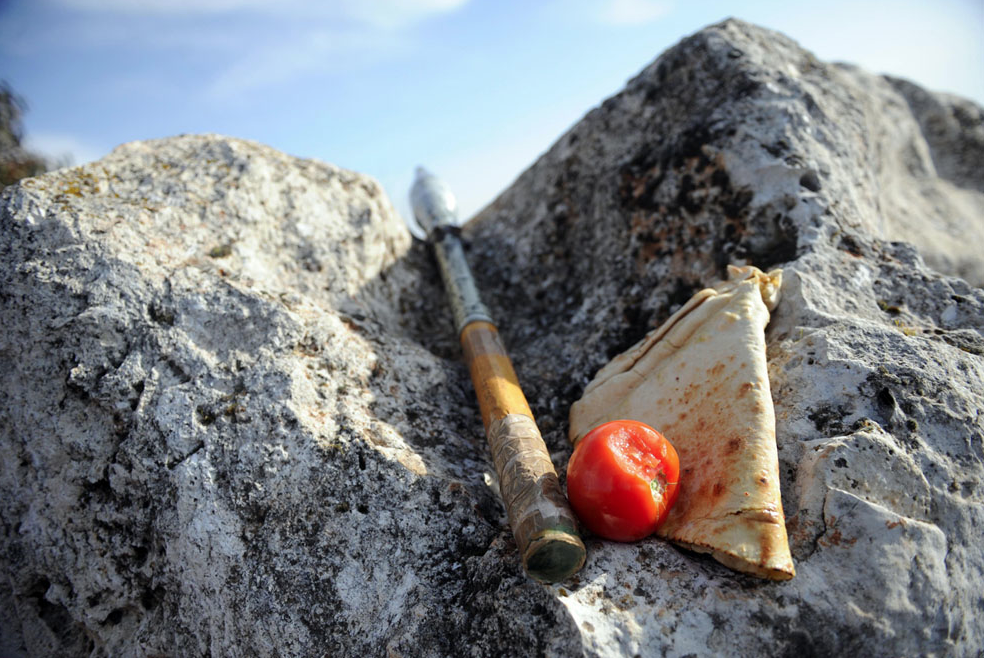Still life photography, the photographic depiction of inanimate objects, is arguably the genre that provides the photographer with the most flexibility in controlling the conditions of his or her practice. In the typical still life photograph the variables of light, space, and time are all subject to the photographer’s volition. Even with its close kin, the portrait, the photographer is at the mercy of the cooperation of the subject being photographed. But in a still life the object of attention lacks any will. As such, and perhaps more than in any other photographic genre, the still life photograph underscores the epistemological tension—perhaps even a paradox—that rests at photography’s claim to be a medium of representation: on the one hand, it relies upon the realist aesthetic that underwrites our faith in the transparency and truth of mechanical reproduction (however limited they might be), and on the other hand, it relies on the artistry of the photographer him or herself.
It is probably because the still life photograph embodies this tension so clearly that we rarely find such images in photojournalistic venues that tend to privilege the realist aesthetic over the artistry of the photographer. But of course sometimes such photographs work their way past editorial gatekeepers. And so we have the image above which recently appeared in a slide show titled “Syria’s Long, Bloody Uprising.” The caption reads, “A slice of bread and a tomato sit next to a rocket at a position manned by Free Syrian Army Rebels in Idlib on February 22, 2012.”
As is conventional for still life photographs, the caption is altogether minimalist, purporting to tell us no more and no less than is patently obvious in the image itself. And in this sense the caption reinforces the realist aesthetic of the image, for clearly we are looking at a rocket, a tomato and a slice of bread as they “sit” next to one another. But, of course, no sooner than we acknowledge the correspondence between caption and image that problems emerge. The first and most obvious problems is that technically speaking objects don’t “sit,” they are placed; and whether the placement was effected by the photographer or someone else the point is that their proximity to one another has to be accounted for as something other than objective, self-determination.
The second problem is more interesting, for the caption actually gives the lie to thinking of this as a still life photograph at all, as it situates the three objects not just in in relationship to one another, but in relationship to a particular place. And more, that place is not just a geographical location (Idlib), but a subject position “manned by Free Syrian Army rebels.” And of course now the proximity of the three objects to one another becomes all the more significant, for it invites the viewer to consider not just the relationship between objects that give life (food) and objects that take life away (weapons of destruction), but also to sympathize with those who rely upon such simple (indeed, almost primitive) and natural objects.
The larger significance of the photograph and its caption has less to do with how it coaches a political identification with the Free Syrian Army, however much and however effectively it might do that, and more to do with reminding us that all photographs operate epistemologically at the tension between what is mechanically reproduced (what is actually there) and what the photographer artistically creates (how we are invited to view it). In short, it is a notice that photojournalism is fundamentally a mode of public art and it behooves us to attend to its artistry even when the conventions of photographic representation might otherwise discourage us from doing so.
Photo Credit: Bulent Kilic/AFP/Getty Images

This photo reminds me of parts of the world where a tomato and a slice of bread might constitute lunch. What strikes me about those places is the gulf between my concept of “what a meal is” and how relatively simple it actually, physiologically, could be. The joy of travel (for me, intellectually) is teasing out all the spiritual and cultural implications of such a difference. Coming back from Haiti I was disgusted by the thought of “foodies.”
Anyway, another thought about geographic location is that there’s a lot of kinetic energy in this photo – not only the rocket but the uneaten food. It will all dissipate, and it will launch the rocket to another location and power the person to another location. If you were to take a picture of it now, it would just be a rock, but some lives would be changed out of the frame.